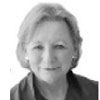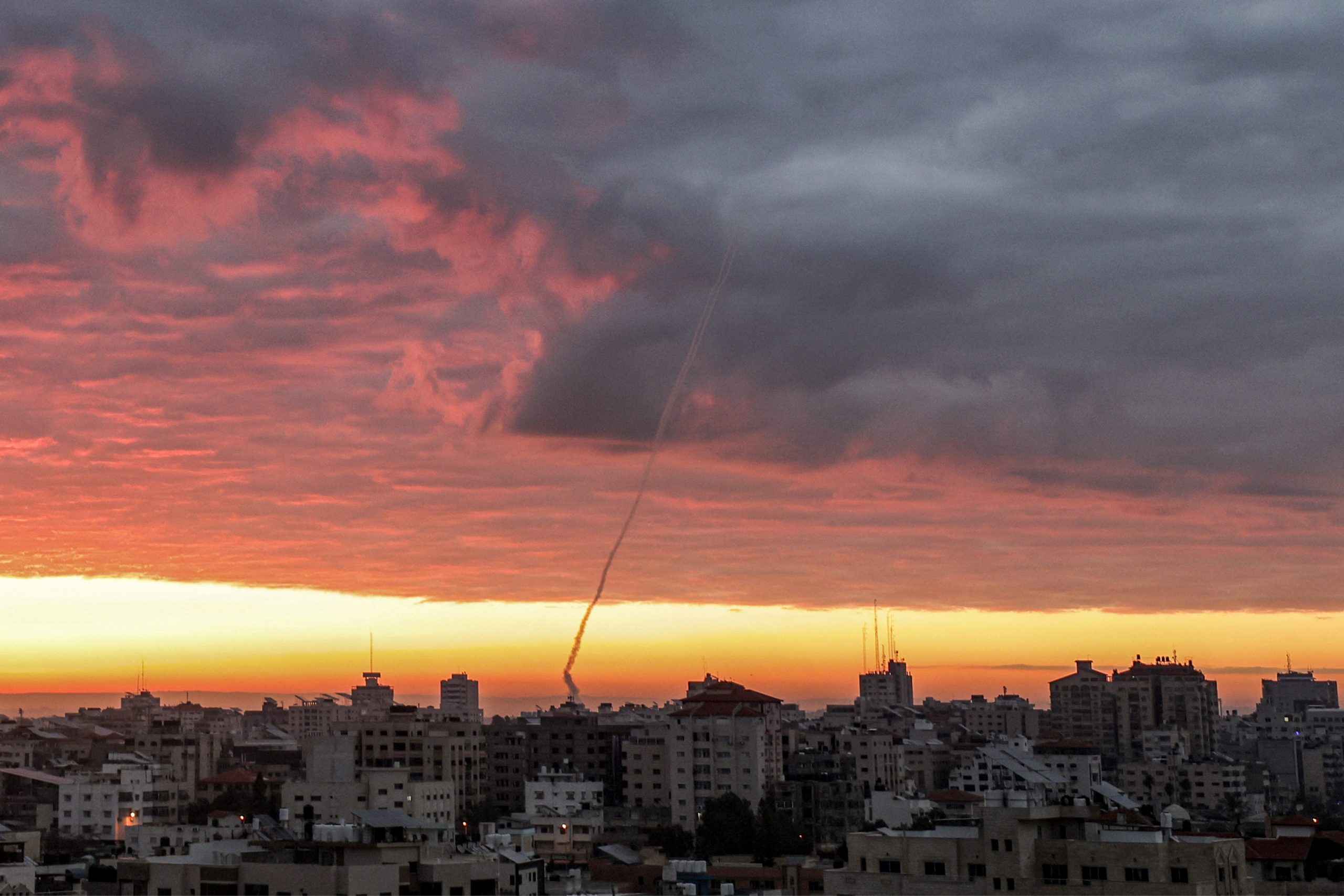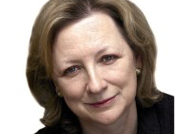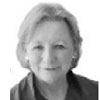Carla Carlisle: 'What we are witnessing began in 1900BC with Abraham’s journey from Ur to Canaan'
Carla Carlisle shares her perspective on a war that truly feels Biblical.


I’ve started this column 10 times. Writing for a magazine as tolerant as Country Life is an enviable job, but the Editor does expect the writers to make sense. You aren’t required to tow a party line, but you should know what you are writing about.
Even before I began, I knew I was out of my depth.
The day started with the Bible, at least in adjectival form. Seeing as so few people read it nowadays, it’s amazing how overworked is the word ‘biblical’. This morning, the rain flooding the village of Walsham le Willows was described on Radio Suffolk as ‘biblical’. A photograph of the town of Debenham under water appeared on my WhatsApp with three words: ‘Old Testament biblical.’
The rain came into our cellar and entered the house through the cloakroom door. We pumped the water into the faux ha-ha, a useful ditch. Although I’m not shy of overstatement, I wouldn’t call the flood waters ‘biblical’; I saved the word for the war in Israel and Gaza, a war that truly feels Biblical.
Long before I could read and write, I knew the story of the Israelites fleeing Egypt. I listened wide eyed to the story of God parting the waters of the sea and going before His people in the form of a cloud to show them the way, a pillar of fire that lit their path by night. The Book of Exodus was scary stuff for six year olds in Sunday school. We preferred the birth of baby Jesus in a manger. However, decades later, when the historian Taylor Branch chose Biblical titles for his sprawling history of the American civil-rights movement — he called the first volume Parting the Waters, the second Pillar of Fire — I recognised the words. I knew where he was coming from: that the story of the black Christians brought as slaves to America was like the story of Israel’s captivity.
The final volume of Mr Branch’s trilogy is called At Canaan’s Edge. When you are raised in the Bible Belt of the American South, you know that Canaan was the Promised Land. It’s in the Old and New Testaments, in hymns and gospel music, but is better known now as the Holy Land. When we looked at it on maps, we had no idea what we were looking at. Even today, the historical chronology and ancient religious history is a tangle of dates and places. No one believes what we are witnessing began in 1900BC with Abraham’s journey from Ur to Canaan. Even the Balfour Declaration in 1917 has been lost in the mists of time.
Yet October 7 is a violent reminder that the Middle East, a piece of geography that resides in hearts and minds, and is recognised by historians, political leaders and mapmakers, is the most volatile region in the world. Instead of being the Promised Land, it is the incubator of much of the terrorism that is a persistent threat to so many countries.
Exquisite houses, the beauty of Nature, and how to get the most from your life, straight to your inbox.
"No one wants to contemplate that the attack on October 7 could set off a chain of events that will turn this into a larger war that the US and Europe enter"
And, despite the thousands of words that have been written in the past few weeks, I realise that I have no words, no beliefs, no words of truth and certainty to polish and defend. I try wandering through the woods, my boots sinking into the dark earth that Dylan Thomas would have called ‘Bible black’, emerging into the light of the vineyard. It’s a secular patch of Promised Land, vines turning gold in the autumn sun. Countryside dwellers want rural life to be a forgotten Elysian island. We want enough acreage to shut out the real worlds of floods or war. We want what all people want: safety, refuge.
Not knowing what to do, I return to the maps in the hope that the eye can make sense of what the mind finds hard to understand. There’s Gaza, a slender thumbnail 25 miles long, facing the Mediterranean Sea, fenced off from Israel and Egypt. Someone on the radio says it is the size of the Isle of Wight, that Israel is ‘the size of Wales’.
With the maps still laid out, I listen to my first ever podcast. It’s an unlikely pair: Rory Stewart and Alastair Campbell. With remarkable clarity, Mr Stewart tells the history of Israel in 10 minutes. Then Mr Campbell provides useful facts. For instance, he says: Arabs are people who speak Arabic as their native language and there are 470 million in the world. There are Christian Arabs and Jewish Arabs, but fewer than 15% of Muslims are Arabs. Islam, which is the main — and fastest-growing — religion in the world, now numbers 1.5–2 billion. Palestinians — there are seven million in the world — are Arabs who live in the Middle East. Five million of them live in Gaza. About six million Jews live in Israel.
When a friend calls from London, I tell her that far more Jews were killed on October 7 than on Kristallnacht, that the attack has unleashed a wave of anti-Semitism in America and Europe. She says: ‘Stop! It’s all too depressing’ and she urges me to ‘write about something else’.
And, at this late hour, I wish I had written about something else. When you are bewildered and don’t have answers, it is wise to keep silent. No one wants to contemplate that the attack on October 7 could set off a chain of events that will turn this into a larger war that the US and Europe enter. It has already taken the West’s eyes off the war in Ukraine, a huge gift to Putin, who is now believed to be receiving weapons from North Korea. Amid the chaos of this war, China might take the opportunity to go into Taiwan.
Again, I confess: I am out of my depth. I rejoice when President Biden pleads with Israel not to make the same mistakes America made after 9/11. Most people in the world — including the Israelis and the Palestinians — just want to live in a freedom-loving, peaceful land. One thing I’m sure of is that to look danger in the eye is not pessimism. It makes what comes next less ominous.

Carla Carlisle laments a lost inheritance
Twelve mint julep cups which didn’t make it into Carla’s inheritance are in fact irreplaceable, finds Carla, as she turns

Carla Carlisle on privatisation
We’re the generation who consolidated the idea that markets are the primary instruments for achieving the common good, says Carla
